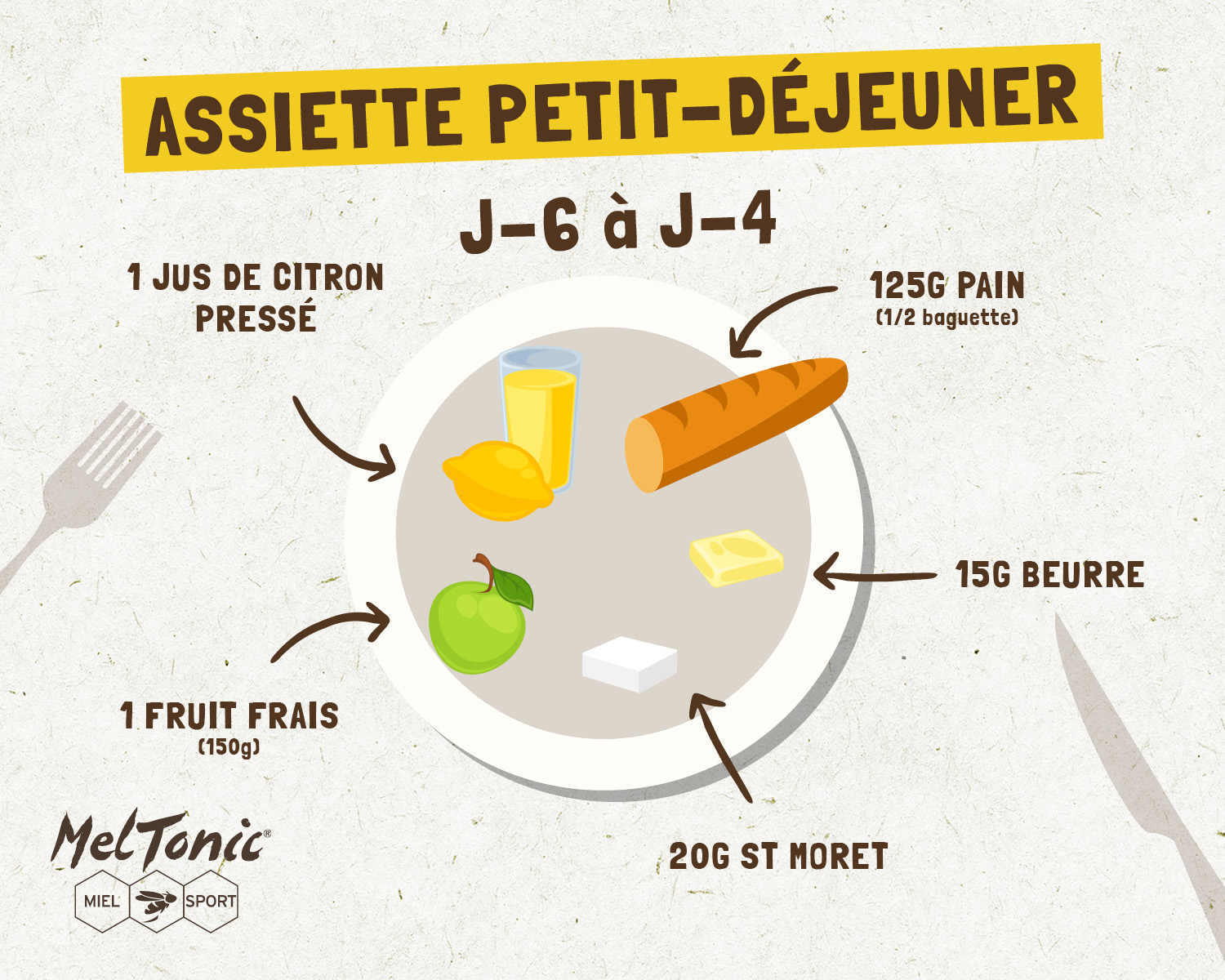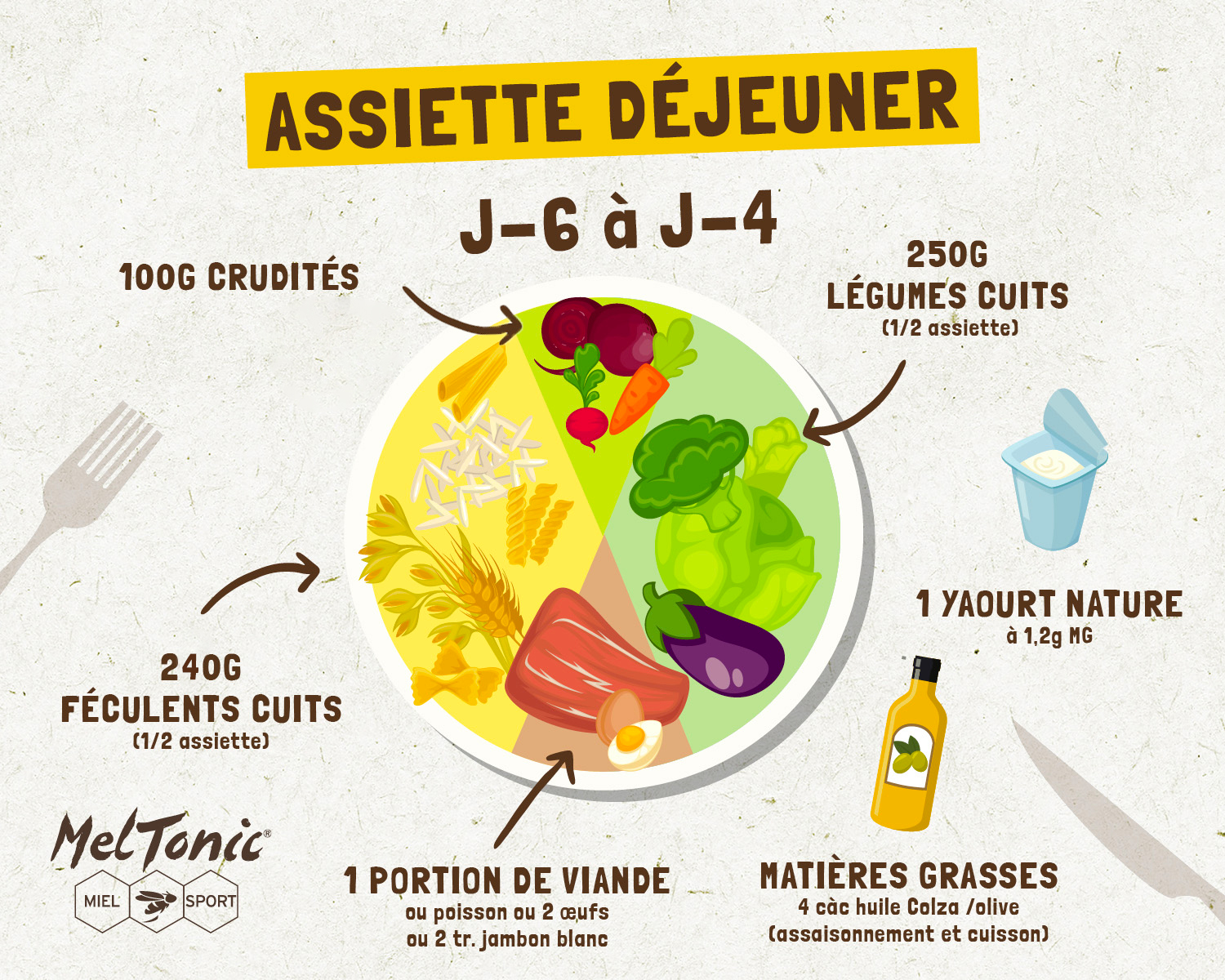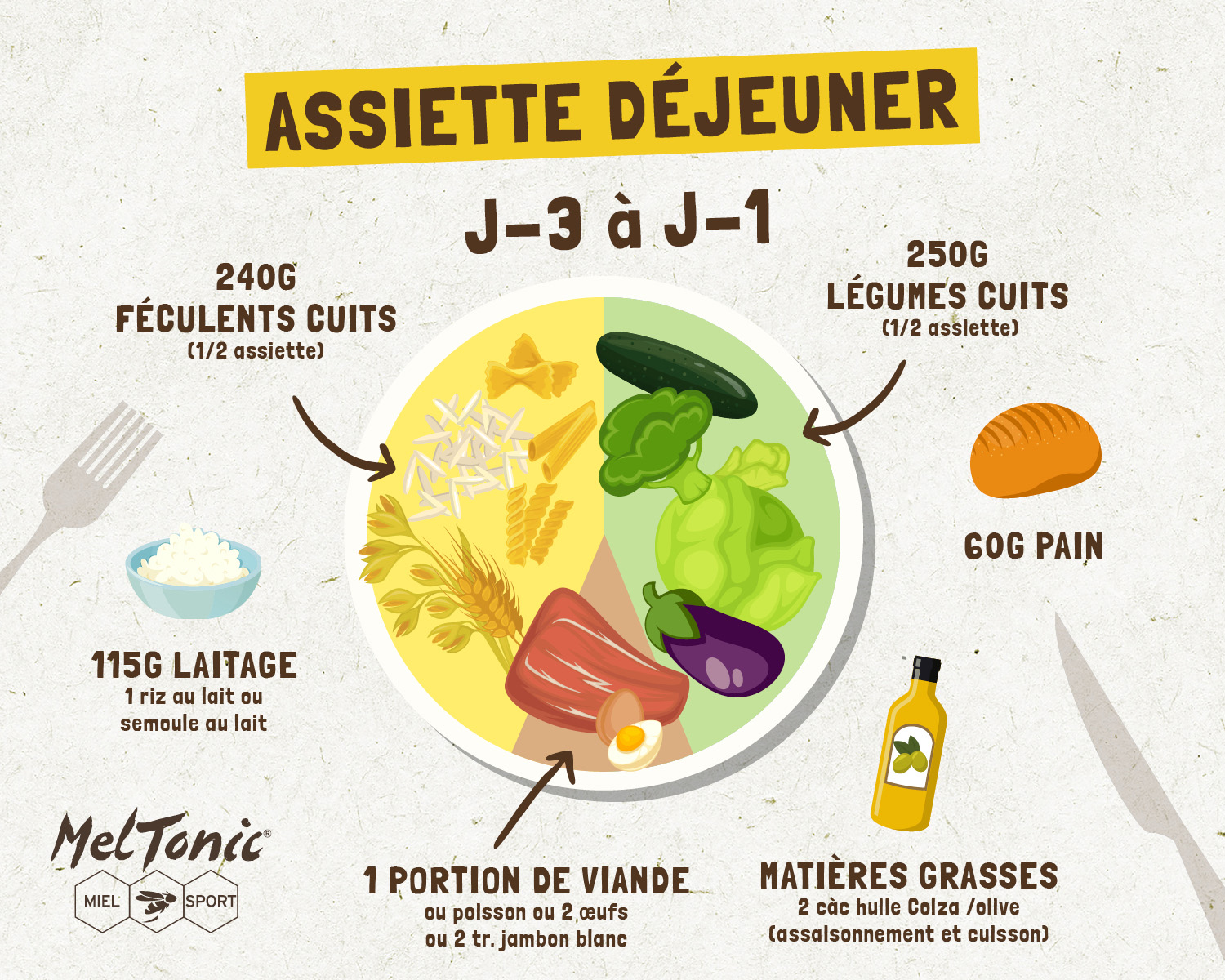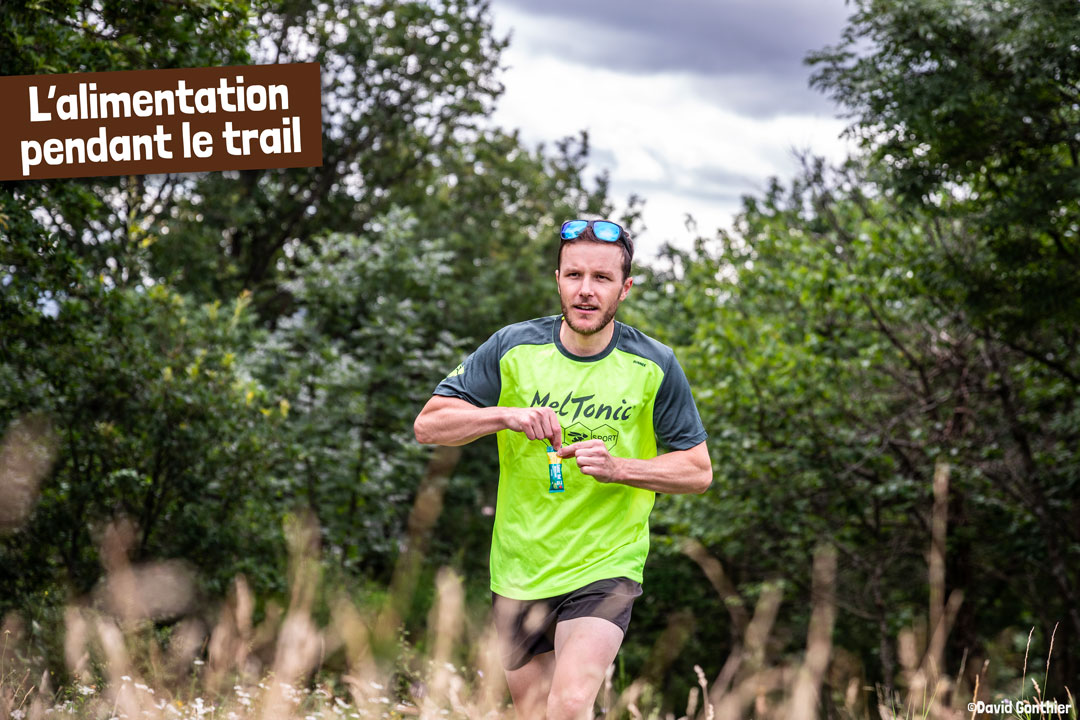Food trail from A to Z
Categories :
Advice

The trail is a specific endurance event because of the terrain, which is often bumpy with positive changes in altitude and more or less passable trails. The challenge is therefore to optimize the management of energy expenditure which can vary from one section of the race to another. To do this, the key is to get to know yourself well with various training sessions (hills, paths, stairs, etc.) and to understand your ability to absorb energy and hydrate regularly in different situations. Are you all terrain for your trail nutrition too?
Having a nutritional strategy does not mean that you will follow it to the letter, but rather that you have thought about the possible options and have trained yourself to absorb your energy sources during the race to free up your mind as much as possible during the race.
Food planning is important for long trail runs of more than 3 hours because the energy sources used require regular feeding to avoid running out of fuel or digestive problems. Indeed, our digestive system will be subjected to important constraints (less blood irrigation, repeated shocks, non-optimal hydration, stress, ...) which will necessarily have an impact on our individual capacities to provide the food that will meet our nutritional needs.
The nutritional strategy which consists in anticipating will depend on several parameters of the outing or the race:
So, how can we ensure that the trail feeding program is effective?

During all the preparation for your trail race, a balanced diet is essential. There are three main pillars for a balanced diet:
Your meals must contain the widest possible variety of foods, as local and seasonal as possible, so that they contain a good nutritional quality. The portions should be determined according to your hunger by taking the time to chew well and to be attentive to your sensations during meals. Don't forget the possibility of having snacks in the morning and/or afternoon in order to provide a diet that covers all your energy needs.
Food supplements may be necessary per course of treatment if you are experiencing periods of fatigue or times when you are unable to maintain a good diet. However, it is preferable to make a nutritional assessment beforehand with a sports dietician because the assimilation of these supplements can only be optimal within the framework of a basic diet as balanced as possible.
The main source of energy will remain sugars with a predominance of complex carbohydrates which are specific to starchy foods.
The sources of lipids will be oriented towards more omega 3 for their anti-inflammatory power.
However, in order to maintain good energy reserves with muscle glycogen, it will be important to reduce the portion of fat in the diet for more carbohydrates and proteins with increased needs in the context of endurance.
The training sessions will be a basis to start learning how to eat during a race with important points of vigilance to avoid injuries and to test your digestive capacities. In other words, any training session will allow you to test a regular hydration with only water for sessions of less than 1H30 and with an effort drink for longer training sessions. Hydrating while running can be a real challenge for some people if they want to avoid swallowing too much air which can cause stomach discomfort. Repeated dehydration during each training session can also lead to fatigue fractures, muscle pain or inflammation that will be detrimental to your preparation.
The objectives are simple for the more or less long training period: maintain an optimal hydration, a quantity of fiber and micro-nutrients (vitamins, minerals and trace elements) interesting in the food. For this, vegetables at the main meals will be necessary: for those who are reluctant to eat vegetables, the minerals, fiber and water they contain will help buffer the increased body acidity for an athlete. A sufficient amount of daily water when you add 500 ml of water per hour of training in addition to the 1.5 L daily. Your digestion will necessarily be put to the test if you do not manage to allow enough time for your meals, hence the possibility of splitting your meals or setting up snacks. This will allow for better digestion and management of the interval between your meals and your training sessions.
The objectives of your training plan being to prepare you for endurance, it will be necessary (with short but repetitive training sessions over the week) to increase the amount of protein in your plate with a sufficient intake of meat, fish, eggs and dairy products and/or with the combination of legumes and cereals). The repair of damaged muscle fibers and hormonal reconstruction are dependent on this protein intake.
The week before your trail run will be crucial to recharge your energy as much as possible and avoid that your intestines are weakened by an excess of fibers or that your overall energy is damaged by a long and difficult digestion. It is a question of putting all the chances on your side to optimize the nutrition and hydration parameters to express your full potential after the weeks of preparation with a training plan adapted to your objectives.
As for a marathon, the diet for the week before the race will be based on a modified dissociated diet:
It will be above all a matter of maintaining a diet rich in fiber, minerals and vitamins, thus balanced by avoiding eating too many starchy foods even if some training is on the agenda. In this case, we prefer a lunch plate with as many starchy foods as vegetables and we reduce the starchy foods in the evening, also avoiding compensating with a diet richer in proteins (meat, fish or eggs) or more fatty.


Here, the idea is to increase the amount of starch to load the muscle glycogen and to decrease the portion of fat, fiber and possibly protein. To do this, a simple trick is to provide a starchy starter (semolina or cold pasta/rice) or a carbohydrate dessert (semolina with milk or rice pudding, a slice of low-fat yoghurt cake, or a fat-free cookie such as oatmeal and banana cookies). If you are on the move with travel constraints, for example to get to a site, or if it is difficult for you to anticipate meals and control their content due to professional imperatives, you can use a maltodextrin-based drink.
The advantage is that you remember to keep well hydrated, the disadvantage is that some people will have difficulty digesting it (accelerated transit, nausea, ...). In any case, sufficient hydration by small sips throughout the day remains very important because the glycogen load is made with water molecules! To limit fat intake, you should :


What to eat the day before a trail run?
This program should be continued until lunch the day before the race to facilitate a light meal without putting pressure on the amount of carbohydrates to ingest. However, you should keep in mind to limit fiber, fat and protein which contribute to delay sleep and generate a disturbed sleep with a slower digestion. The dinner preceding the day of the competition must be composed essentially of starchy foods, respecting your appetite without fear of not having enough. The load is already done on the 2 days and a half preceding, it is only a question of maintaining the load to the maximum!

Whether it's breakfast, lunch or dinner depending on the start time of your race, the last meal should be composed mainly of intestinal comfort foods to avoid digestive problems during the effort from the beginning of the race! This last meal or snack should allow for easy and quick digestion.
Essentially, it will be a matter of :
All complete meals must be taken at least 3 hours before the start. The waiting ration is essentially a waiting drink to keep hydrated and to facilitate gastric emptying. It is important to plan it because in case of a delayed start, it will be essential to maintain a good hydration and a good level of glycogen reserve. A 20 cl apple juice in 30 cl of water is very practical and very operational with two types of carbohydrates: fructose and sucrose, which allows for an even distribution of sugars without the risk of reactive hypoglycemia.
The refreshments offered by the organization must be an integral part of your food plan so as not to overload you with your own food. Make sure to test your drink beforehand to avoid any surprises on the day of the race and prefer above all natural and organic drinks to improve digestion.
In order to facilitate digestion, you must alternate textures by avoiding being only on liquid (the effort drink or gel). For this, semi-liquid (fruit purée, compote) or solid food such as sports bars can be taken alternately.
On average, a 500 ml can loaded with 20g of carbohydrates from your sports drink and 1 bar or 1 gel more every hour will suffice to obtain the minimum 30g of carbohydrates/hour recommended for this type of effort.
A too fast depletion of these reserves by lack of hydration and energy would cause blood sugar problems, digestive disorders if you try to rectify the shot too late because forced to ingest too large quantities of drink or food at once.
Intestinal pain will be avoided if the 3 sugars (malto-dextrin, fructose and glucose) are present in your intake with an adequate quantity. This is the case of exercise drinks with a dosage corresponding to the osmolarity of the body during exercise, either hypo- or iso tonic.
Hydration must be at a constant frequency to support the physical effort, hence the importance of being able to rinse your mouth sometimes with water or coke at the refreshment stations. In order to avoid hyponatremia (sodium depletion caused by overconsumption of water), the sodium dosage of your exercise drink is essential. Exercise drinks are already pre-dosed. If you sweat a lot because of high temperatures, it is important to supplement with salty food (salty bars or salty race supplies).
Water losses are also more important if the trail takes place at altitude, so even if the temperatures drop at altitude it will be necessary to maintain constant hydration. The presence of 3 different carbohydrates allows for a more even distribution of energy. The mineral and vitamin content of exercise drinks supports muscle contraction and compensates for sweat losses. It is difficult to know how much to drink because it also depends on the temperature and the altitude. The average is around 500 ml/hour with a range of 400 ml to 1L (maximum capacity of your stomach!). As thirst is not the right signal, a relatively high frequency of hydration (by sips every 10 to 15 minutes) is preferable to a too large dose late.

Recovery is essential to preserve the youth of your cells and tissues! It will be necessary to bring something to replenish your glycogen reserves (therefore carbohydrate foods), to think about setting up a good rehydration to compensate for the inevitable water losses and to facilitate the evacuation of metabolic waste. Remineralization through the consumption of fruits and vegetables is essential to buffer the acidity of your body. The effort must be replaced by rest to optimize the speed of this cellular regeneration, which also requires a sufficient quantity of proteins. In order to avoid digestive problems at the end of the race, you should avoid large quantities immediately, and once again favor semi-liquid or easily diffused drinks. Recovery drinks are available with protein enrichment. Otherwise, sweetened milk is a good alternative in the hour following the effort with fresh fruit to chew well if you tolerate it well.
